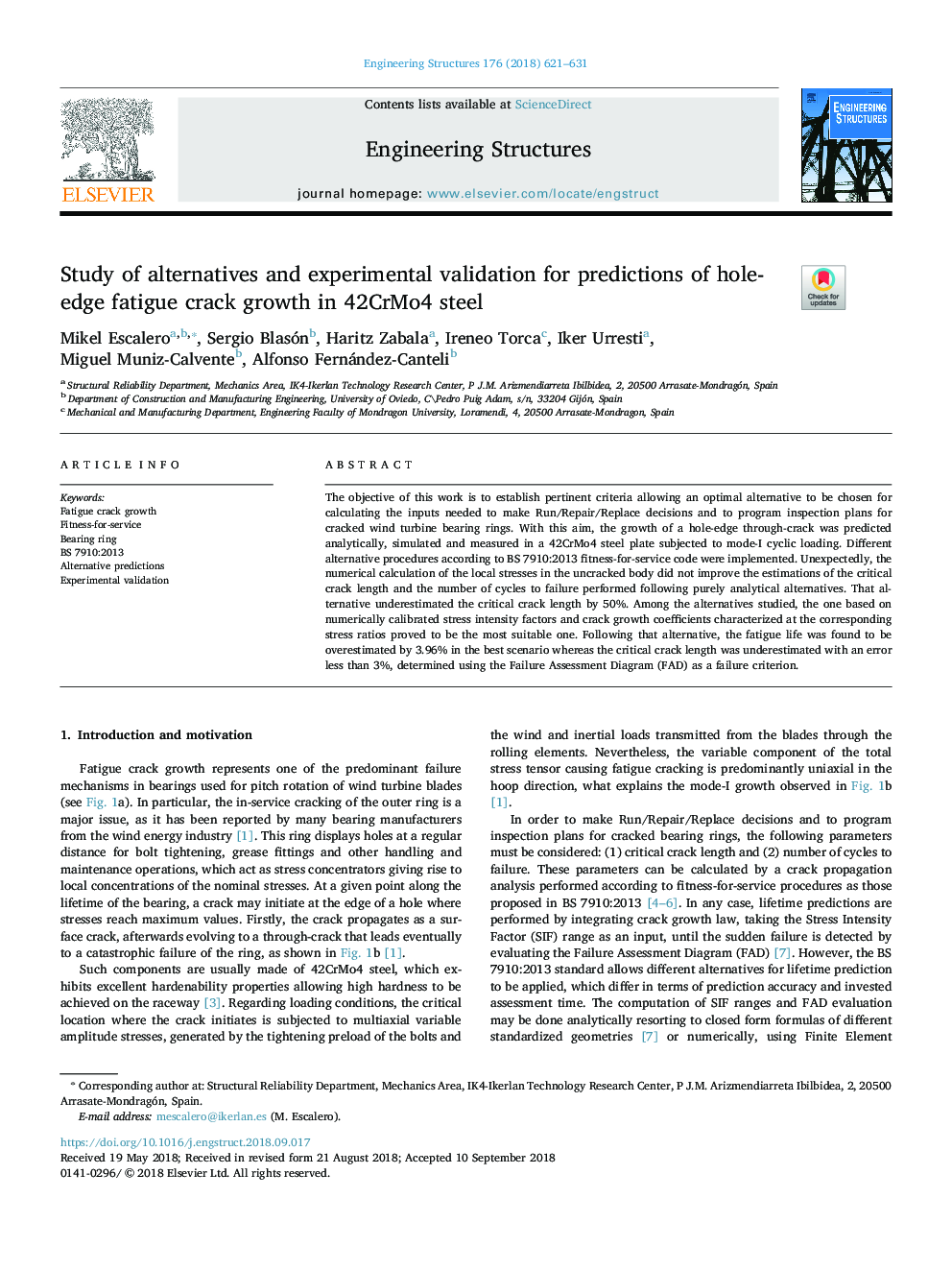| Article ID | Journal | Published Year | Pages | File Type |
|---|---|---|---|---|
| 11028923 | Engineering Structures | 2018 | 11 Pages |
Abstract
The objective of this work is to establish pertinent criteria allowing an optimal alternative to be chosen for calculating the inputs needed to make Run/Repair/Replace decisions and to program inspection plans for cracked wind turbine bearing rings. With this aim, the growth of a hole-edge through-crack was predicted analytically, simulated and measured in a 42CrMo4 steel plate subjected to mode-I cyclic loading. Different alternative procedures according to BS 7910:2013 fitness-for-service code were implemented. Unexpectedly, the numerical calculation of the local stresses in the uncracked body did not improve the estimations of the critical crack length and the number of cycles to failure performed following purely analytical alternatives. That alternative underestimated the critical crack length by 50%. Among the alternatives studied, the one based on numerically calibrated stress intensity factors and crack growth coefficients characterized at the corresponding stress ratios proved to be the most suitable one. Following that alternative, the fatigue life was found to be overestimated by 3.96% in the best scenario whereas the critical crack length was underestimated with an error less than 3%, determined using the Failure Assessment Diagram (FAD) as a failure criterion.
Related Topics
Physical Sciences and Engineering
Earth and Planetary Sciences
Geotechnical Engineering and Engineering Geology
Authors
Mikel Escalero, Sergio Blasón, Haritz Zabala, Ireneo Torca, Iker Urresti, Miguel Muniz-Calvente, Alfonso Fernández-Canteli,
